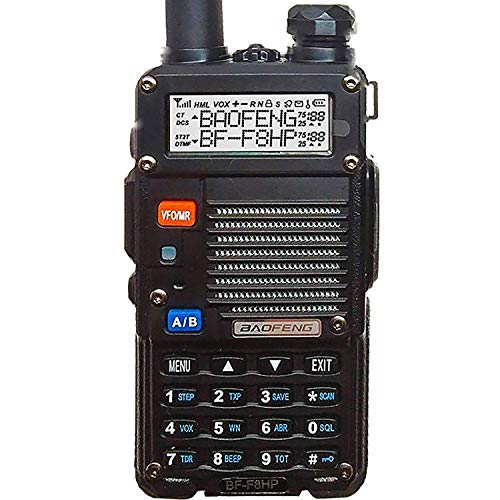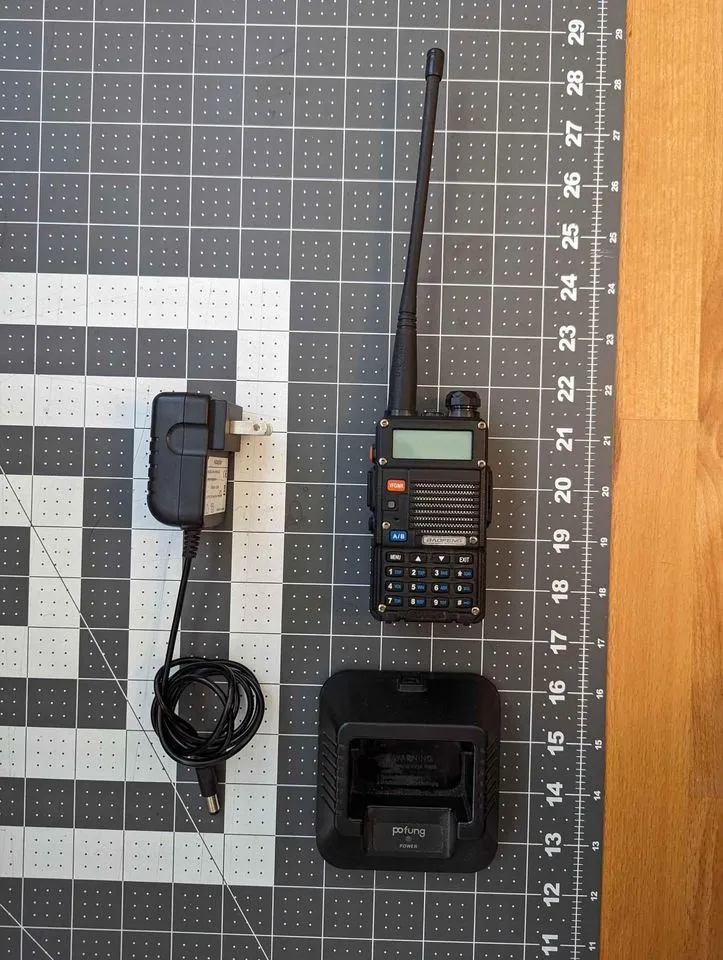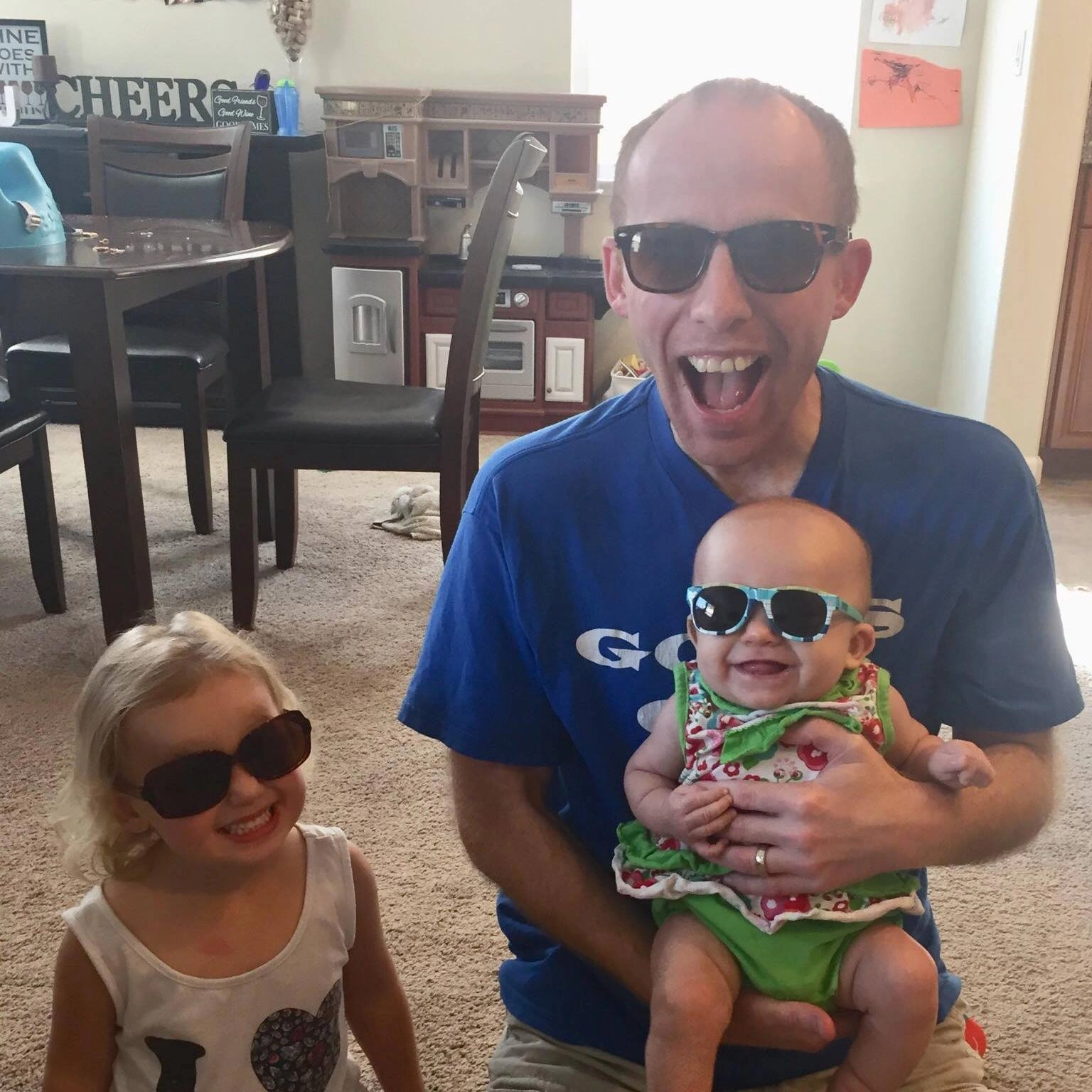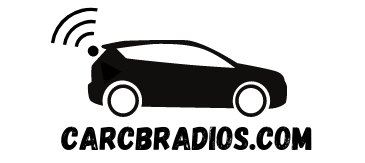As a new ham user, choosing the right handheld ham radio can be overwhelming. With so many options on the market, it can be difficult to know where to start.
In this article, I'll be sharing my honest reviews of my favorite five handheld ham radios. Whether you're on a budget, looking for the most features, or simply want the simplest option to use, we've got you covered. So, let's dive in and find the perfect ham radio for you.
Best Handheld Ham Radio: Key Takeaways
- There are many handheld ham radio options on the market, making it difficult to choose the right one as a new ham.
- The top 5 options were selected based on price, functionality, modes of operation, and community support.
- Whether you're on a budget, looking for the most features, or want the simplest option to use, there's a handheld ham radio on our list for you.

- Upgrades from our Previous Generation UV-5R: Twice the Output Power (8 watts up from 4 watts output), New Hardened Durable Radio Shell, 30% Larger Battery, V-85 High Gain Antenna (Twice the Antenna Performance), USA Support + In-depth User Guide Included; A PC03 FTDI Programming Cable is Recommended for Easier PC Programming
- High / Med / Low Power Settings (8W, 4W, 1W); Frequency Range: VHF: 136-174 MHz(Rx/Tx). UHF: 400-520 MHz(Rx/Tx); Broad (Wide) / Narrowband (Narrow) Selectable

- Real Dual Band Operations (V+V, U+U, V+U, U+V) are available with two independent receivers. Large individual LED indicators for A band and B band!
- Wide-range RX coverage with continuous reception from 0.5MHz – 999.99MHz (A Band) (USA Cellular Blocked) / 108MHz – 580MHz (B Band)!
- Band Scope function monitors in real time, up to 79 displayed channels that are centered around the current VFO frequency. The center frequency can be tuned by the dial knob or by touching and moving the frequency of a displayed channel bar!

- VHF/UHF Commercial Grade Dual Band Handheld Transceiver
- Three Selectable TX Power settings (5 W (High)/2.5 W (Middle)/0.5 W (Low)) - Over 9 hours Operating time with Supplied 1,950 mAh Li-Ion Battery pack *1 - Optional High-capacity 2,500 mAh Li-Ion Battery Pack (SBR-26LI) provides over 11.5 hours of Extended Operating Time *1 - 3.5-Hour Rapid Charger (SBH-22) Included (Using SBR-25LI) - QRK (Quick Recall Key) : Four User Programmable Keys for Quick Access to Favorite Functions
You May Like: 5 Best Ham Radio Base Stations

1. Baofeng BF-F8HP
The Baofeng BF-F8HP is an excellent entry level option for those looking for an affordable radio. With an estimated price of around $40 - $70, it's a great choice for those on a budget. As you can see in my image, it is a little smaller than other Ham radios.

One of the standout features of the BF-F8HP is its higher 8 watt power output, which is an improvement over the typical 5 watts found in other radios in its price range. Additionally, it boasts a larger battery capacity than many of its competitors.
This radio allows for transmission on both 2 Meters and 70 Centimeter bands, and has additional receive-only bandwidths, allowing you to listen to FM broadcasts, the weather service, and GMRS while scanning. Expect to work simplex contacts within a 5 mile range and hit local repeaters in town to give your signal even longer reach.
While it's helpful to have a programming cable to make programming memories easier on a computer, the keypad is also useful for dialing in simplex frequencies or sending DTMF to activate Echolink or IRLP functions.
The Baofeng BF-F8HP is a popular choice among ham radio enthusiasts due to its affordability and solid battery life. Even experienced hams often have one lying around in their truck or as part of a go kit.
Here are some reasons why the BF-F8HP is a great choice:
- Solid battery life
- Affordable
- Larger 8 Watt output power than previous generation UV5R
- Works on popular 2-meter and 70cm bands
- Dual band / multi channel operation
If you're interested in obtaining a technician license to operate this radio, you can take the first step to getting licensed through a local class.
- Upgrades from our Previous Generation UV-5R: Twice the Output Power (8 watts up from 4 watts output), New Hardened Durable Radio Shell, 30% Larger Battery, V-85 High Gain Antenna (Twice the Antenna Performance), USA Support + In-depth User Guide Included; A PC03 FTDI Programming Cable is Recommended for Easier PC Programming
- High / Med / Low Power Settings (8W, 4W, 1W); Frequency Range: VHF: 136-174 MHz(Rx/Tx). UHF: 400-520 MHz(Rx/Tx); Broad (Wide) / Narrowband (Narrow) Selectable
- The BF-F8HP was designed in the USA and because not everyone is a radio-expert we really wanted to focus on providing an easier user experience! That starts with the new in-depth manual that guides you through the capabilities and customization of the BF-F8HP. On top of that the BF-F8HP also includes exclusive concierge customer help and warranty support. This concierge service is only available on select BaoFeng models such as the BF-F8HP, UV-82HP, and UV-5X3
2. Yaesu FT-65 Rugged
For those looking for a more rugged handheld radio option, the Yaesu FT-65 is a great choice. The FT-65 offers similar features to the Baofeng, including 2 meter and 70 centimeter operation with monitoring options. However, it comes in a more hardened case and offers a more durable experience.
In my experience, Yaesu radios are well-supported and offer more accessory options.
Unlike most radios on our list, the FT-65 has a single VFO, meaning you can only listen to one frequency at a time unless you are scanning. However, this trade-off is worth it for the ease of use and durability that the FT-65 offers. We recommend purchasing a programming cable to enter your repeater memories.
Some reasons to consider the FT-65 include its affordability, good battery life, rugged design, ease of use, and strong support. Additionally, the FT-65 comes with a 3-year warranty for added peace of mind.
Overall, the Yaesu FT-65 is a great value pick for those seeking a more rugged and durable handheld radio option.
You may like: CB vs Ham Radio - Differences Explained
- VHF/UHF Commercial Grade Dual Band Handheld Transceiver - Compact Design, Measuring W 2.1” x H 4.1” x D 1.2” (52.5 x 104.5 x 31 mm) - Rugged Construction; Meets IP54 Rating (Dust/Water protection) , MIL-810-C,D and E - One Watt Powerful Audio Output and Clear Audio from the Big Front Speaker - 5 Watts of Reliable RF Power within a Compact body
- Three Selectable TX Power settings (5 W (High)/2.5 W (Middle)/0.5 W (Low)) - Over 9 hours Operating time with Supplied 1,950 mAh Li-Ion Battery pack *1 - Optional High-capacity 2,500 mAh Li-Ion Battery Pack (SBR-26LI) provides over 11.5 hours of Extended Operating Time *1 - 3.5-Hour Rapid Charger (SBH-22) Included (Using SBR-25LI) - QRK (Quick Recall Key) : Four User Programmable Keys for Quick Access to Favorite Functions
- Large White LED Flashlight, Alarm and Quick Home Channel Access for Emergency Signaling - Versatile Scanning Capabilities : Programmed VFO Scan, Memory Scan, Priority Channel Scan, Weather Alert Scan - WX Channels with "Severe Weather" Alert (US Version) - VOX Operation with Optional VOX Earpiece Microphone (SSM-512B) - PC Programmable with Optional Programming Cable (SCU-35)
3. Yaesu FT5DR
When it comes to System Fusion digital radios, there are two main options to choose from: the FT-70 DR and the FT5DR. While the FT-70 DR is a great choice for those on a budget, the FT5DR offers more advanced features for a higher price point.
One of the standout features of the FT5DR is its large touch screen display, which makes it easy to navigate and customize settings. The FT5DR also boasts IPX7 waterproofing, making it a great choice for outdoor use in inclement weather.
In terms of audio quality, the FT5DR delivers crisp and clear sound, and its out-of-box support for Wires-X and C4FM makes it easy to get started with digital communication. Additionally, the FT5DR allows for dual band operation and has swappable MicroSD memory.
While the FT5DR is more expensive than the FT-70 DR, it offers a range of advanced features that make it well worth the investment for serious digital radio enthusiasts. However, it's worth noting that the FT5DR does require a programming cable for more advanced setup, which is an additional cost to consider.
Overall, the FT5DR is a top-of-the-line choice for those looking for the most advanced features in a System Fusion digital radio.
- Real Dual Band Operations (V+V, U+U, V+U, U+V) are available with two independent receivers. Large individual LED indicators for A band and B band!
- Wide-range RX coverage with continuous reception from 0.5MHz – 999.99MHz (A Band) (USA Cellular Blocked) / 108MHz – 580MHz (B Band)!
- Band Scope function monitors in real time, up to 79 displayed channels that are centered around the current VFO frequency. The center frequency can be tuned by the dial knob or by touching and moving the frequency of a displayed channel bar!
- A built-in Bluetooth unit is installed in the new FT5DR. Users can enjoy the Hands-Free Operation using the optional YAESU Bluetooth headset SSM-BT10 or a commercially available product.
- The C4FM digital communication features which are already popular in the market, such as: Automatic Mode Select (AMS), Digital Group ID (DG-ID) operation, and Smart Navigation function are available with the new FT5DR. The FT5DR supports the WiRES-X Portable Digital Node Function as well!
4. Icom ID-52
For those looking to get started with digital radio, the Icom ID-52 is a top pick for D-STAR. Icom has been a leader in the D-STAR market for over a decade, and the ID-52 is their latest offering.
One of the standout features of the ID-52 is its DR mode. This feature allows you to download a GPS searchable list of repeaters into your radio, which is separate from its 1,000 memory slots. You can select a repeater from the list, or choose "near repeater" to pick the closest options. The DR mode works on both FM and D-STAR repeaters, making it easy to program.
The ID-52 also has a broad set of features you would expect from a more expensive handheld, including a nice big color screen, Bluetooth functions that add the ability to import and transmit photos over D-STAR, onboard recording of your transmissions, and it is all programmed with a standard Micro USB cable to switchable Micro SD card memory. Icom offers plenty of accessories as well.
In terms of analog features, the ID-52 compares well with the Baofeng and Yaesu. It also adds a broader receiver range, bringing in the civil aviation band and some mil-com aviation frequencies. It still focuses its transmit on 2 Meter and 70 centimeter which are the most popular frequencies for D-STAR repeaters.
The ID-52 has a great built-in speaker and a rugged IPX7 WaterProof Rating. It also has Micro USB connectivity and swappable MicroSD memory. The radio has a great range for power usage and can receive both civil and military air frequencies.
While the Kenwood TH-D74A is an honorable mention for its D-STAR with DR mode and APRS in one rig, it is no longer in production. Therefore, the Icom ID-52 is the top pick for those looking for a D-STAR radio.
In summary, the Icom ID-52 offers amazing user interface, Bluetooth and GPS functionality, and is a rugged and waterproof device. It is a great value for its price point and offers a broad set of features that make it a great choice for those looking to get started with digital radio.
- 16 Channels
- 400-470 MHz UHF Frequencies
- 4 Watts Transmit Power
- Repeater Capable
- Includes Drop-in Battery Charger
5. Anytone AT-D878UVII Plus
In terms of programming your radio and getting started on digital, going from zero to DMR is probably the most complicated path. However, the Anytone AT-D878UVII Plus has our choice because it has broad support.
This radio includes a 7 Watt transmitter on 2 Meters and 70 Centimeters. It has a big color screen, built-in GPS, and supports APRS. The ones we have seen come with a programming cable in the box, and a push-to-talk wristband which seems to be a throw-in.
The Anytone AT-D878UVII Plus has one of the largest memories with 4,000 channels, which is great when traveling. It is a solid, well-built rig with accessory options, because it is cross-compatible with "Kenwood" style accessories. Although it does not have the receive bandwidth of FM broadcast and airband like a couple of the others we have discussed, it is still a great option.
To get started on DMR, you will need something called a "code plug" that contains the right memory configurations. If you don’t have a friend that can share, consider one of the commercial vendors that will sell you a custom code plug along with the radio. This could save a lot of frustration getting started.
The Anytone AT-D878UVII Plus has the following features:
- DMR
- Color screen
- Large on-board memory capacity (500,000 DMR Contacts)
- Great Bluetooth support
- GPS and APRS support
Overall, the Anytone AT-D878UVII Plus is a great option for those looking to get started on DMR. It has a large memory capacity, is well-built, and has great accessory options.
- The New AnyTone AT-D878UVII PLUS Has APRS Receive and Transmit, so now you can receive other users APRS Transmissions
- Upgraded 500,000 Contact List instead of 200,000 on previous models so you can grow with the DMR community.
- FREE AT-D878 course included on BridgeCom University with step-by-step video tutorials to get you on DMR and making contacts fast ($97 value).
- Dual band UHF/VHF radio on DMR and analog so you can have one radio for anything on the tech bands.
- Up to 7w of high power transmitting so you can have maximum range using your HT.
- Easy to use interface and programming software so that you don't have any trouble making new contacts.
- Front face programable with VFO channels so you can punch in repeaters and other frequencies on the fly without having to use the included programming software.
Which Digital Should I Choose?
When it comes to choosing a digital format, availability is the most important factor. As of November 2022, there are over 2,100 DMR repeaters, around 1,200 D-STAR options, and approximately 2,300 Fusion repeaters in North America according to RepeaterBook.com.
However, before committing to a specific digital format, there are two things to consider. First, it's important to check what's available in your local area. The easiest way to get started is to use the repeater closest to you and to reach out to local clubs for any questions you may have. You should check which digital format is more popular in your area, whether it's DMR, D-Star, or Fusion.
Second, if you plan to work with a group, it's important to know their preferred digital format. For example, Georgia ARES is focused on a statewide D-STAR network, which is not cross-compatible with Fusion or DMR. The point here is that different clubs and groups around the country use different formats, and there is no standard. Therefore, it's important to talk with them locally before investing a lot of money into a radio if your plan is to join up and support them.
Overall, the choice of digital format ultimately depends on availability and the preferences of the local clubs and groups. It's important to research and choose the best option for your specific needs.
Conclusion
In conclusion, choosing the best handheld ham radio can be a daunting task, but there are many great options available. It's important to consider your needs and budget when making a decision. While there may be a learning curve when programming your radio, local ham clubs can be a great resource for repeater memories and code plug files.
Frequently Asked Questions
What are the Best Handheld Ham Radios for Beginners?
When it comes to finding the best handheld ham radios for beginners, there are a few factors to consider. A good beginner's radio should be easy to use, affordable, and reliable. Some of the best options on the market include the Baofeng UV-5R, the Yaesu FT-60R, and the Kenwood TH-D74A. These radios are all user-friendly and offer a range of features that make them great for beginners.
- High/ Mid/Low Power ,Dual band / dual display / dual standby,AUTO Keypad Lock.
- FCC Part 15 Part 97 Certified, FCC ID: 2AJGM-UV5R.
- 1800mAh Battery,128 groups of storage channels
- Worry-free after-sales service:We provide Programmable PC software,We also provide 30 days no reason to Warranty.
- In addition to the antenna provided with the walkie-talkie itself, we also equipped with AR-771 long antenna, you can choose your favorite antenna to use according to the needs of the occasion, which can enhance the call distance.
What is the Most Reliable Handheld Ham Radio?
Reliability is a key factor when it comes to choosing a handheld ham radio. Some of the most reliable options on the market include the Yaesu VX-6R, the Kenwood TH-D74A, and the Icom ID-51A Plus2. These radios are all built to last and offer a range of features that make them ideal for ham radio enthusiasts.
How Do I Choose a Handheld Ham Radio?
Choosing a handheld ham radio can be a challenging task, but there are a few key factors to consider.
- First, think about your budget and what features you need. Do you need a radio with a long battery life or one that is waterproof?
- Next, consider the brand and reputation of the radio.
- Finally, read reviews from other ham radio enthusiasts to get an idea of what radios are the most reliable and user-friendly.
What are the Best Handheld Ham Radios for the Money?
If you're looking for a handheld ham radio that offers great value for the money, there are a few options to consider. The Baofeng UV-5R and the Radioddity GD-88 are both affordable options that offer a range of features. The Yaesu FT-60R and the Kenwood TH-D74A are also great options that offer a lot of value for the price.
What is the Best Ham Radio for Survival?
When it comes to choosing a handheld ham radio for survival, there are a few key features to look for. The radio should be durable, waterproof, and have a long battery life. Some of the best options on the market include the BaoFeng BF-F8HP, the BTECH UV-5X3, and the Yaesu FT-60R.
- Upgrades from our Previous Generation UV-5R: Twice the Output Power (8 watts up from 4 watts output), New Hardened Durable Radio Shell, 30% Larger Battery, V-85 High Gain Antenna (Twice the Antenna Performance), USA Support + In-depth User Guide Included; A PC03 FTDI Programming Cable is Recommended for Easier PC Programming
- High / Med / Low Power Settings (8W, 4W, 1W); Frequency Range: VHF: 136-174 MHz(Rx/Tx). UHF: 400-520 MHz(Rx/Tx); Broad (Wide) / Narrowband (Narrow) Selectable
- The BF-F8HP was designed in the USA and because not everyone is a radio-expert we really wanted to focus on providing an easier user experience! That starts with the new in-depth manual that guides you through the capabilities and customization of the BF-F8HP. On top of that the BF-F8HP also includes exclusive concierge customer help and warranty support. This concierge service is only available on select BaoFeng models such as the BF-F8HP, UV-82HP, and UV-5X3
What are the Best Hand Held Radios for Ham Radio Use?
When it comes to choosing a handheld ham radio for general use, there are a lot of great options on the market. Some of the best include the Yaesu VX-6R, the Kenwood TH-D74A, and the Icom ID-51A Plus2. These radios offer a range of features and are built to last, making them great choices for ham radio enthusiasts.

Hi & Welcome!
My name is Jeremy and I have been an avid car nut for many year. My first car was an 1987 Honda CRX. I put in my first Kenwood stereo, amp, 2 10" JLs and a CB Radio in it and have been an avid user of CBs and car radios for years. I'll do my best to share my tips, information and thoughts to help you with whatever question you might have, ABOUT ME
After I graduated from High School, I worked 5 years are Radio Shack and 3 years at Circuit City answering questions and helping customers with various electronics questions.



